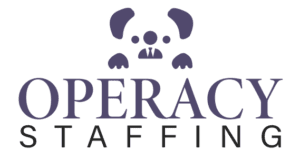In today’s saturated digital marketplace, standing out requires more than just a clever ad campaign or a well-designed website. To succeed, businesses must deliver a consistent message across multiple platforms. That’s where integrated marketing services come in — offering a strategic and cohesive approach that combines various channels for maximum impact.
From email marketing and SEO to social media, paid advertising, and public relations, an integrated approach ensures that every customer interaction reinforces your brand. In a rapidly evolving landscape, especially for industries providing professional services and B2B offerings, a multi-channel strategy is not just beneficial — it’s essential.
The Core of Integrated Marketing
At its heart, integrated marketing aligns all communication channels to tell a unified brand story. Instead of operating in silos, marketing activities are planned to complement one another, ensuring consistency in message, tone, and timing.
This is particularly valuable for businesses that rely on strong branding and trust, where the customer journey often spans multiple touchpoints. Whether your audience finds you through a search engine, a LinkedIn post, or a newsletter, they should experience the same core message and brand personality.
Reaching the Right Audience
One of the greatest benefits of integrated marketing is the ability to engage with diverse audience segments across various channels. This is critical in sectors that require specialised outreach strategies.
For instance, recruitment firms often promote open roles and services through job boards, social media, blogs, and webinars. This is especially true when targeting professionals looking for consultant jobs, where the messaging must be tailored, competitive, and platform-specific to attract top talent.
Building Trust and Recognition
Consistency builds brand recognition — and recognition fosters trust. When your branding, visuals, and tone are aligned across channels, it reinforces your company’s reliability.
In sectors such as Australian offshore services, trust is a key decision-making factor. Clients need confidence in your processes, communication, and delivery. Integrated marketing ensures that from the first website visit to the final follow-up email, your brand delivers a unified experience that reinforces credibility.
Enhancing Business Agility
Businesses offering workforce solutions are increasingly turning to integrated strategies to remain agile in fast-paced markets. By synchronising messaging across multiple touchpoints, they can quickly adapt to market shifts or campaign performance insights without disrupting the overall narrative.
For example, if a particular campaign isn't performing well on social media, adjustments can be made across related channels (like landing pages or email content) to improve outcomes — all while staying true to the core messaging.
Real-World Scenario: Multi-Channel in Action
Let’s imagine a professional services firm expanding its reach into new markets. To attract and retain clients, it implements a multi-channel strategy:
- It launches a blog series focusing on industry insights relevant to companies seeking Australian offshore services.
- Simultaneously, the firm runs sponsored LinkedIn posts targeting professionals in leadership roles.
- Meanwhile, it creates an email drip campaign offering tips on managing remote teams and accessing global talent pools.
- The website and landing pages are updated to align with the same branding and call to action, ensuring a seamless user experience.
Integrated marketing services are not just about coordination — they’re also about performance. Using tools like Google Analytics, CRM dashboards, and social media insights, businesses can measure what’s working and refine their strategies in real time.
This level of insight is crucial when filling niche roles or marketing specialised offerings. Campaigns targeting candidates interested in consultant jobs can be optimised based on real engagement data — allowing recruitment teams to adjust copy, targeting, or platforms as needed.
Getting Started with Integration
For businesses just beginning to explore integrated marketing, the key is to start with a clear understanding of your audience, brand values, and core objectives. From there:
- Choose the right mix of channels based on where your audience spends time.
- Develop a unified content strategy that can be adapted across formats.
- Use automation and scheduling tools to keep campaigns aligned.
- Regularly monitor and adjust based on performance data.
Whether you're in recruitment, consulting, or outsourcing, adopting an integrated approach allows you to drive better engagement, deliver measurable results, and build long-term brand equity.
Final Thoughts
In a competitive and increasingly digital marketplace, integrated marketing is no longer optional — it’s essential. For companies offering workforce solutions, or those aiming to fill high-level consultant jobs, or provide tailored Australian offshore services, a well-coordinated, multi-channel approach ensures every marketing dollar works harder.
By investing in consistency, connectivity, and cross-platform strategy, businesses can create stronger relationships, build trust, and ultimately convert more leads into lasting clients.
